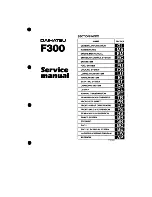
Low vehicle mass and optimal brake sizes give the ATS braking performance that is among the
best in the segment, with Brembo brakes contributing to 60-0 performance of approximately 129
feet (39.3 meters).
Up front, a multi-link MacPherson strut suspension uses a double-pivot design for a more
precise feeling of control, including more linear and communicative steering, and a smoother
ride. It also improves impact isolation on bumps and rough surfaces.
The double-pivot system incorporates a pair of ball joints and lower control links that replace a
conventional wishbone at each wheel. The optimal balance of ride and handling is achieved via
a suspension geometry that decouples road inputs by integrating a soft fore/aft “ride link” that
provides greater isolation from impacts and a stiff, laterally positioned “handling link” for more
direct steering feel and quicker lateral response.
The control arms, the spindle and the body form an effective four-bar link for each side of the
front suspension, creating virtual pivot points for reduced spindle length, significantly reducing
steering wheel feedback due to wheel impacts and imbalance. There is also a direct-acting
stabilizer bar.
The front suspension’s design also enables a shorter spindle and positive-offset steering
geometry for optimal steering control, excellent straight-line stability and a more refined ride.
High-durometer rubber and hydraulic bushings are used with the front suspension for an
excellent balance of ride comfort and precise response when cornering.
At the rear of the ATS is the first five-link independent suspension in a Cadillac. It’s a design
that helps reduces roll center motion, enables positive lateral control, reduces “squat” during
acceleration and promotes excellent dynamic stability. In short, it helps keep the tires planted on
all surfaces and during all hard-cornering maneuvers.
Four handling links (upper and lower control arms) are used at each side to control wheel
motion and a toe link at each wheel provides additional horizontal control – particularly during
hard cornering. The upper and lower links create an effective double-wishbone design, although
the links are mounted independently. As with the front suspension, the five-link design creates
virtual pivot points that the ATS’s engineers used for geometry optimization. The stiff links are
mounted on a cradle that contributes to a smoother, quieter and more isolated ride. The cradle
is made of steel (with hydroformed side rails) to help optimize the car’s structural stiffness and
mass.
Seventeen-inch (17x8-inch) wheels matched with 225/40-series tires are standard, and 18x8-
inch wheels and 255/35-series rubber are available on the ATS, with run-flat tires. Models with
the FE3 Performance Suspension Package feature 18x9-inch rear wheels.
A mechanical limited-slip differential is a feature not matched by all other competitors and gives
the ATS an edge when it comes to ensuring all of the powertrain’s torque is applied to the tires
during hard cornering. It is standard with the six-speed manual transmission and included with
the FE3 Performance Suspension Package. It is housed in a robust 8.6-inch carrier. Other
models feature a 7.67-inch carrier.
Supporting the ATS’s new suspension designs are advanced damping, steering and braking
systems, including Magnetic Ride Control (MRC), which is the heart of the FE3 Performance
Suspension Package (included on the RWD Premium Collection) that also includes a




























